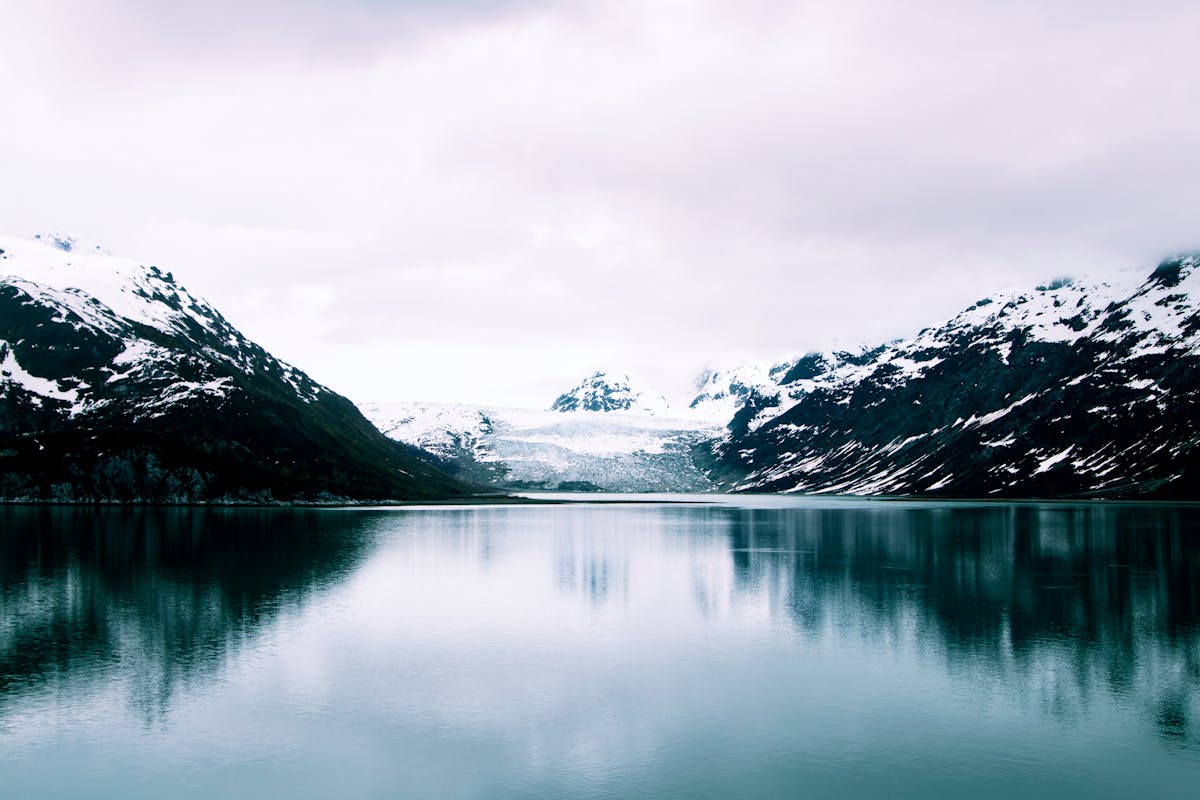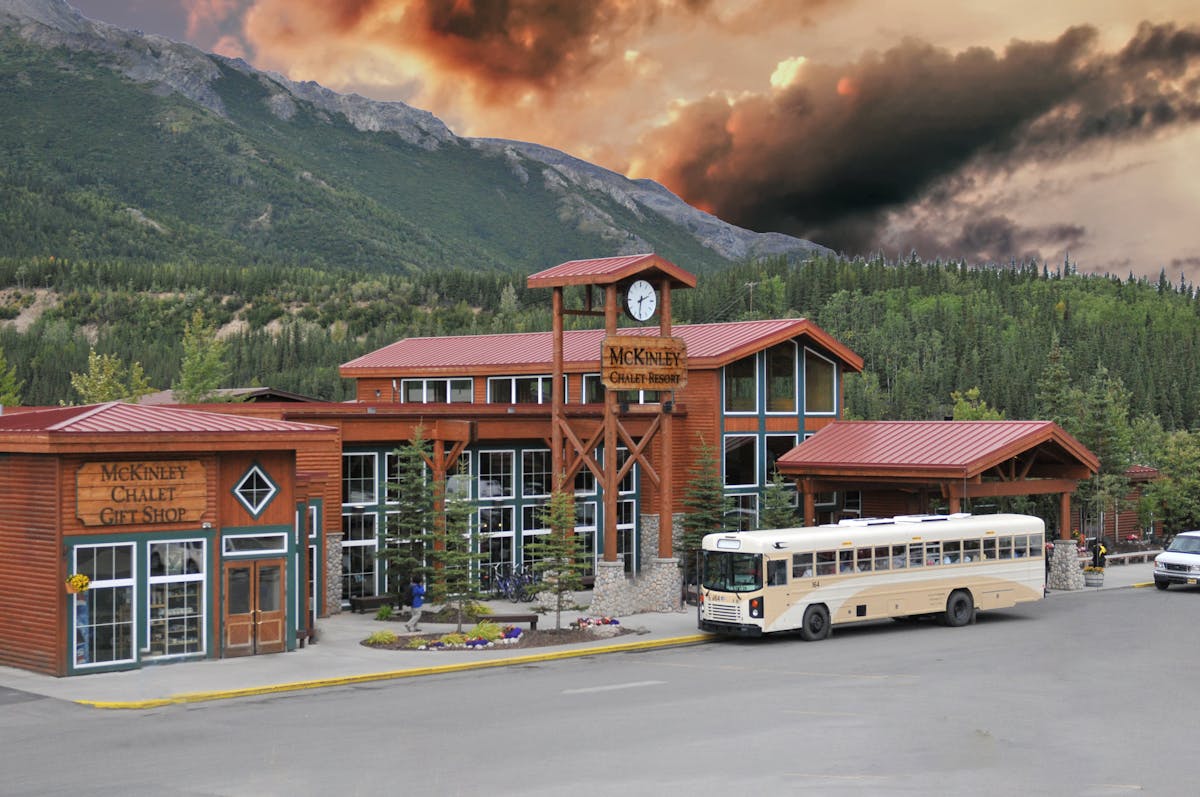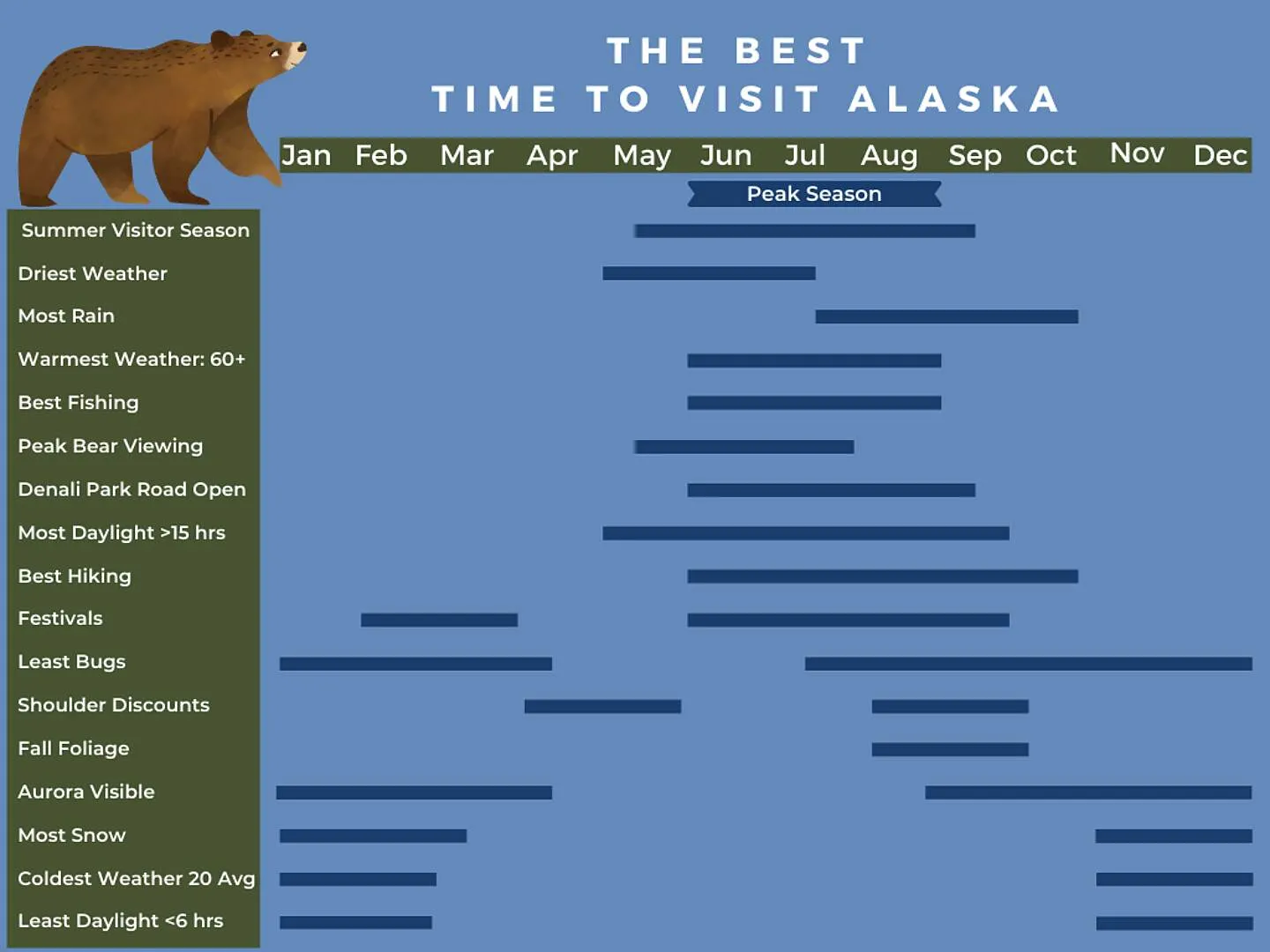Deciding when to visit Alaska is the first crucial step in planning an unforgettable adventure to the Last Frontier. Often associated with summer, this vast and captivating state offers unique experiences throughout the year. From long, sunlit days perfect for wildlife viewing to dark, crisp nights ideal for chasing the Northern Lights, your choice of timing will profoundly shape your Alaskan journey. Understanding the distinct characteristics of each season is key to aligning your trip with your personal interests and travel style.
While summer is undeniably popular, drawing visitors with its warm temperatures and abundant daylight, the shoulder seasons of spring and fall, and even the deep chill of winter, hold their own distinct charms. Whether you dream of hiking through vibrant autumn landscapes, spotting migrating whales, or dog sledding under a starry sky, Alaska has a season tailored just for you. Let’s explore what each time of year offers to help you determine when to visit Alaska for your dream vacation.
The Iconic Summer Season: May to September
Summer is the undisputed peak season for tourism in Alaska, and for good reason. This is when the state truly comes alive, offering the widest range of activities and the most comfortable weather for exploring its vast natural beauty. Typically running from mid-May through mid-September, this period sees a massive influx of visitors eager to experience the Alaskan summer.

The original article rightly points out that the absolute height of summer, from June 15 to July 15, is particularly vibrant. During this time, daylight hours are near their maximum, and temperatures are generally at their warmest. However, the entire May-September window provides excellent opportunities, each part offering slightly different advantages and experiences.
Why Summer is So Popular
Summer provides the most accessible and activity-rich experience in Alaska. Daytime temperatures are pleasant, often ranging from 60°F to 80°F (15°C – 27°C), although they can dip into the 40s°F (4-9°C) at night, requiring layers. This period boasts incredibly long daylight hours, especially around the summer solstice on June 21. In places like Anchorage, you can have nearly 19 hours of usable daylight, extending your time for exploration well into the evening.

Wildlife is at its most active and visible during the summer months. Bears are out, salmon are running (attracting predators and anglers alike), and marine life like whales are prevalent in coastal waters. Hiking trails across the state are generally snow-free and accessible. Fishing is also in full swing, with various salmon runs occurring throughout the season.
Breaking Down the Summer Months
While May to September is broad, understanding the nuances of each month can help you pinpoint when to visit Alaska within the summer window.
Planning Your travel to las vegas nevada
Plan Your Perfect Mackinac Island Vacation – Your Essential Guide
Exploring Cities In Las Vegas – Uncovering Nearby Wonders 2025
- May (Shoulder Season): This is often the driest month of the summer with about a 25% chance of rain. Temperatures are cooler than peak summer but warming up. Snow is melting, trails at lower elevations open up, and wildflowers begin to bloom. It’s less crowded and potentially more affordable than June or July. Wildlife is starting to emerge, but not yet at peak numbers for all species. Mosquitoes are typically not out yet.
- June (Peak Season Start): Daylight hours are nearing their maximum. Temperatures become consistently warmer. Hiking conditions improve significantly as mountain snow melts. Wildlife viewing picks up. This is when mosquitoes often start to appear, becoming more prevalent later in the month. Crowds begin to arrive, especially in popular destinations.
- July (Peak Season): This is generally the warmest month and the heart of the busy season. Daylight hours remain very long. Wildlife viewing, particularly bear viewing around salmon streams, is often at its peak. All tours and activities are fully operational. Expect the largest crowds and highest prices during this period.
- August (Peak/Shoulder Transition): Temperatures start to cool slightly, and the chance of rain increases compared to June and July (around a 50% chance in September). Mosquitoes begin to die off. Fall colors start appearing, especially in interior and northern Alaska. The later half of August marks the beginning of the season when the sky gets dark enough at night for a chance to see the Northern Lights, making it a unique time combining summer activities with potential aurora viewing.
- September (Shoulder Season): Fall colors are often vibrant, particularly in early to mid-September. Temperatures continue to cool, and rainfall is more likely. Crowds thin out significantly, leading to lower prices. Daylight hours decrease but are still substantial enough for activities. This is an excellent time for photographers and those hoping to see both fall foliage and potentially the Northern Lights as darkness returns.
Key Considerations for Summer
Beyond the positive aspects, it’s important to consider the trade-offs of visiting during peak summer. It is the most crowded time, especially in popular national parks and cruise ports. Prices for flights, accommodation, and tours are at their highest. Mosquitoes can be bothersome from June to early August, especially in interior and northern areas. Also, the constant daylight means you generally cannot see the Northern Lights (Aurora Borealis) during June and July.
 When is the best time to visit alaska calendar infographicA calendar infographic showing the best time to visit Alaska, highlighting peak season activities and timing.
When is the best time to visit alaska calendar infographicA calendar infographic showing the best time to visit Alaska, highlighting peak season activities and timing.
Beyond Summer: Exploring Alaska in Other Seasons
While summer dominates the conversation about when to visit Alaska, the state offers incredible, albeit different, experiences during the rest of the year. These seasons appeal to travelers seeking fewer crowds, unique natural phenomena, and different types of activities.
Fall in Alaska (September – October)
Following the vibrant summer, Alaska transitions into a stunning autumn. While September was covered partly in the summer section due to its overlap, October continues the fall experience. Temperatures drop further, and daylight shortens more noticeably. This is a prime time for experiencing dramatic landscapes bathed in golden and red hues. Hiking remains popular in early fall, though conditions can become wet and snowy later in the season.
The chance to see the Northern Lights increases significantly in September and October as the nights grow longer and darker. Many lodges and tour operators specifically cater to aurora viewing during this period. Wildlife is still active, though different behaviors emerge as animals prepare for winter. This season is also popular for hunting. Crowds are minimal, making it an ideal time for a more solitary experience and lower prices.
Winter in Alaska (November – March)
For those drawn to snow, ice, and the magic of the aurora, winter is the answer to when to visit Alaska. This is the season of short daylight hours (just a few hours around the winter solstice in December) and very cold temperatures, often well below freezing. However, it is also the absolute best time to see the Northern Lights, which are most visible on clear, dark nights.
Winter activities abound, including dog sledding (both short tours and major races like the Iditarod in March), cross-country skiing, downhill skiing, snowboarding, ice skating, and ice carving festivals. Cities like Fairbanks and Anchorage become centers for winter events. While many parks and remote lodges close down, others remain open, offering unique winter experiences. Travel can be more challenging due to weather and limited services, but the rewards of seeing Alaska in its frozen beauty and experiencing the aurora can be immense.
Spring in Alaska (April – May)
Spring is a season of transition in Alaska, often referred to as “breakup” as the ice on rivers and lakes begins to melt. May is often grouped with summer, but April offers a distinct early-spring feel. Daylight hours increase rapidly throughout spring, and temperatures gradually warm up, though still often hover around freezing in April. Snow begins to melt, creating muddy conditions in some areas, but also revealing the landscape beneath.
Spring is a quieter time to visit, between the winter aurora season and the summer tourism rush. Wildlife begins to become more active. Migratory birds return, and some marine mammals start their journeys north. While not ideal for all activities (hiking trails can be wet or still covered in snow), it’s a good time for budget travelers and those interested in witnessing the state awaken from winter. The chance to see the Northern Lights diminishes as daylight hours extend into May.
Choosing the Best Time Based on Your Interests
Ultimately, the decision of when to visit Alaska depends entirely on what you hope to experience.
- For Wildlife Viewing: Summer (June-August) is generally best for seeing a wide variety of animals, especially bears and migrating whales. Spring (April-May) offers unique opportunities like gray whale migration.
- For Northern Lights: Winter (November-March) provides the darkest skies and longest nights, maximizing your chances. Late August and September also offer possibilities combined with fall activities.
- For Hiking & Outdoor Activities: Summer (June-September) provides the most accessible trails and comfortable temperatures.
- For Fishing: Summer (May-September) is prime fishing season, varying species available throughout.
- For Cruising: Summer (primarily May-September) is the main cruise season along the Inside Passage.
- For Winter Sports: Winter (November-March) is the only time for activities like dog sledding, skiing, and ice sports.
- For Saving Money & Avoiding Crowds: The shoulder seasons (May, September, October, April) and winter (November-March) generally offer lower prices and fewer tourists.
- For Fall Colors: September is the prime month for vibrant autumn foliage.
Practical Tips for Planning Your Alaska Trip
Regardless of when you visit Alaska, some planning tips are universally helpful. Book accommodations and popular tours well in advance, especially if traveling during the peak summer season. Packing layers is essential year-round, as temperatures can fluctuate dramatically even within a single day. Be aware of the significant differences in daylight hours between seasons. Research transportation options for your chosen season, as some roads and services may be limited or closed outside of summer.
Alaska’s charm lies in its wildness and diversity. By considering what you want from your trip – whether it’s experiencing the Midnight Sun, witnessing the aurora dance, spotting grizzly bears, or simply enjoying the quiet solitude of a snowy landscape – you can confidently choose the ideal time to visit this magnificent state.
Frequently Asked Questions (FAQ)
- When is the cheapest time to visit Alaska? The cheapest time is generally during the off-season winter months (November to March) or the shoulder seasons (April-early May, late September-October) when demand is lower.
- When is the best time to see the Northern Lights in Alaska? The best time is during the dark winter months, from November to March. You need clear skies and active aurora. Late August and September also offer good chances.
- When is the best time to see bears in Alaska? Summer, particularly July, is often considered prime time for bear viewing as salmon runs are active, concentrating bears. May and June are also good as bears emerge from hibernation.
- Is it worth visiting Alaska in the winter? Absolutely, if you are interested in winter activities like dog sledding, skiing, ice festivals, and specifically want to see the Northern Lights. It offers a completely different, magical experience compared to summer.
- How many days do I need in Alaska? A typical Alaska trip ranges from 7 to 14 days to see multiple regions and experience various activities. However, shorter or longer trips can be planned based on your interests and available time.
